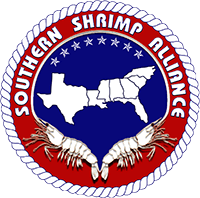Last week, the Southern Risk Management Education Center (SRMEC) within the University of Arkansas’ Division of Agriculture issued a short report regarding the Center’s involvement in the U.S. Department of Agriculture’s (USDA) Trade Adjustment Assistance for Farmers (TAAF) program. From 2010 through 2013, the USDA and twenty-one (21) land grant universities collaborated to develop and deliver technical training through the TAAF program, with the SRMEC managing these partnerships in the southern region.
Shrimpers accounted for over eighty-six percent (86.4%) of the participants in the TAAF program in the southern region (4,790 out of 5,544). Of the 5,544 total participants, 5,361 – or almost ninety-seven percent (96.7%) – developed and submitted an approved initial business plan. Moreover, 5,146 participants – nearly ninety-three percent (92.8%) – developed and submitted an approved long-term business plan.
The TAAF program included an evaluation component. SRMEC’s report observes that “[t]he evaluation results showed that the program made significant and positive impacts on the impacted businesses.” The SRMEC continued “[f]armers and fishermen have been surveyed throughout the program and the feedback we have received is overwhelmingly positive.”
Summarizing key findings of the evaluation results, the SRMEC observed that nearly fifty-six percent (55.5%) of the 5,146 participants that completed a long-term business plan reported that their business was more profitable after participating in the TAAF program. This implies that fully 2,856 program participants saw immediate benefits in business operations coincident to participation. Further, nearly seventy-seven percent (76.6%) of those 5,146 participants reported that they were able to reduce their business costs (3,942 participants). Over seventy-three percent (73.3%) reported that they made changes to their business as the result of participation in TAAF (3,772 participants) and over seventy-five percent (75.2%) indicated that participation in the program made their businesses “better situated to succeed . . .” (3,870 participants).
The SRMEC’s report observes that the Center received “thousands” of comments from participants regarding the program and choose to highlight one:
The program forces individuals to take a hard look at their finances and decide whether or not to make changes to either increase profits, expand business, or look for alternatives. The program was very professionally structured and helpful and I believe it focuses businessmen to evaluate their operation and make calculated decisions.
As with the results of the U.S. Government Accountability Office’s (GAO) July 2012 report regarding the TAAF program, the SRMEC’s report demonstrates that changes to TAAF greatly improved the effectiveness of the assistance. The SRMEC’s report additionally documents substantial tangible benefits to participants that completed the full program, culminating in the development and submission of a long-term business plan.
This TAAF program ended in 2013 and funding for TAAF generally has not been renewed. Thus, while thousands of small, family-run shrimping businesses were assisted by TAAF, there is currently no opportunity for other shrimpers, or other members of the commercial fishing industry, to take advantage of the benefits of the program.
On behalf of the entire shrimp industry, the Southern Shrimp Alliance is grateful for the committed work of everyone who helped to make valuable technical and financial assistance through TAAF available to the industry. The Southern Shrimp Alliance is particularly appreciative of the efforts of the SRMEC, spearheaded by Nathan Kemper and Professor Ronald Rainey, in coordinating the TAAF program in the southern region.
The shrimp industry’s participation in the TAAF program was made possible by the efforts of Professor Michael G. Haby of Texas A & M University and the Texas Sea Grant Program, author of the petitions submitted on behalf of the warmwater shrimp industry by the Southern Shrimp Alliance. Professor Haby further was instrumental – along with several colleagues in academia and Sea Grant – in developing training material of relevance to shrimping businesses that constituted the core of the training component of TAAF. Professor Haby will begin a well-deserved retirement at the end of April. Although his retirement is a loss to the industry, the SRMEC’s report further documents the invaluable assistance Professor Haby has provided to shrimpers throughout his long and distinguished career.
Review the Southern Risk Management Education Center’s report “Trade Adjustment Assistance for Farmers and Fisherman,” authored by Nathan Kemper and Ronald L. Rainey here: http://srmec.uark.edu/TAA%
Read the GAO’s July 2012 report here: http://www.gao.gov/products/
